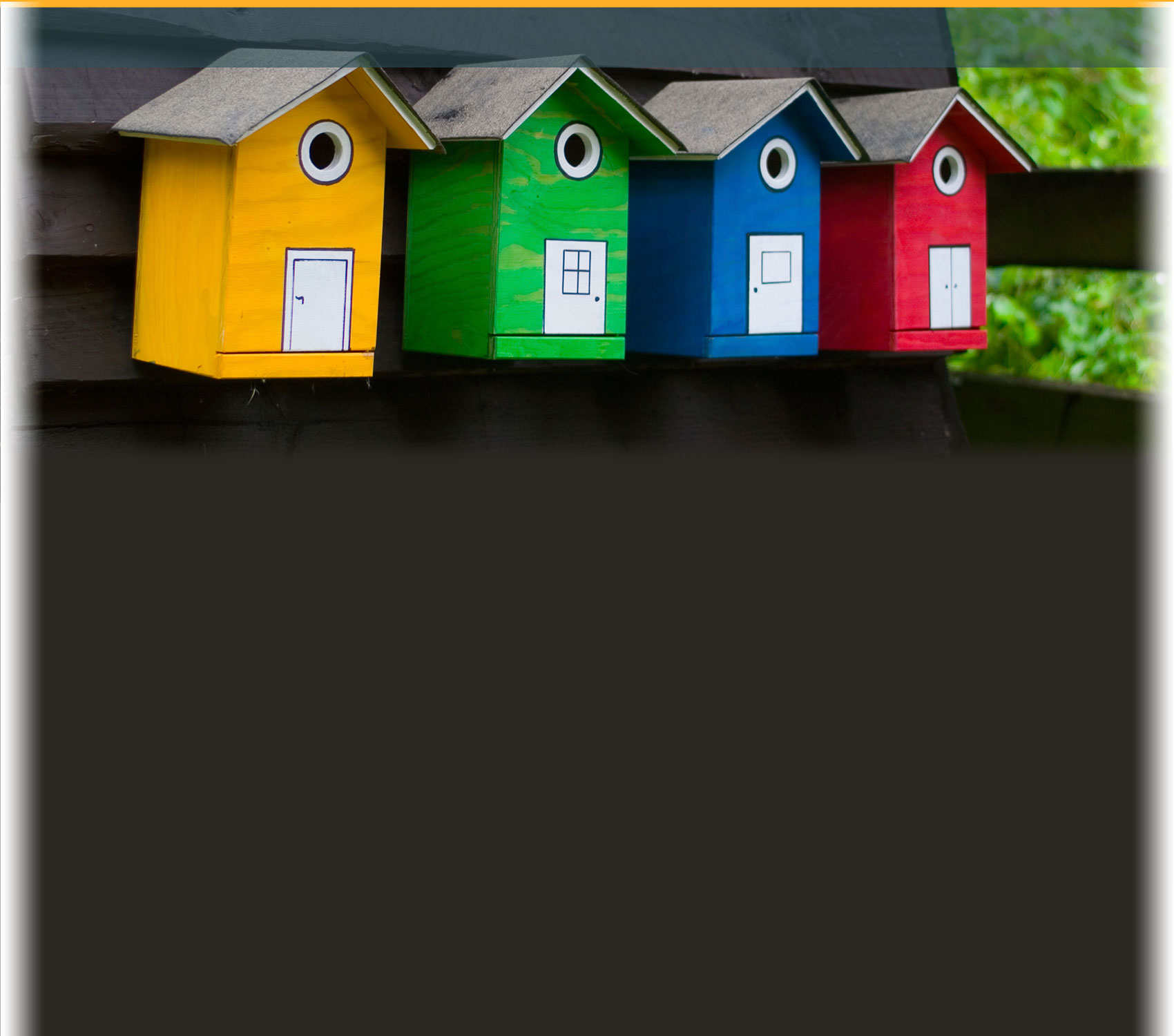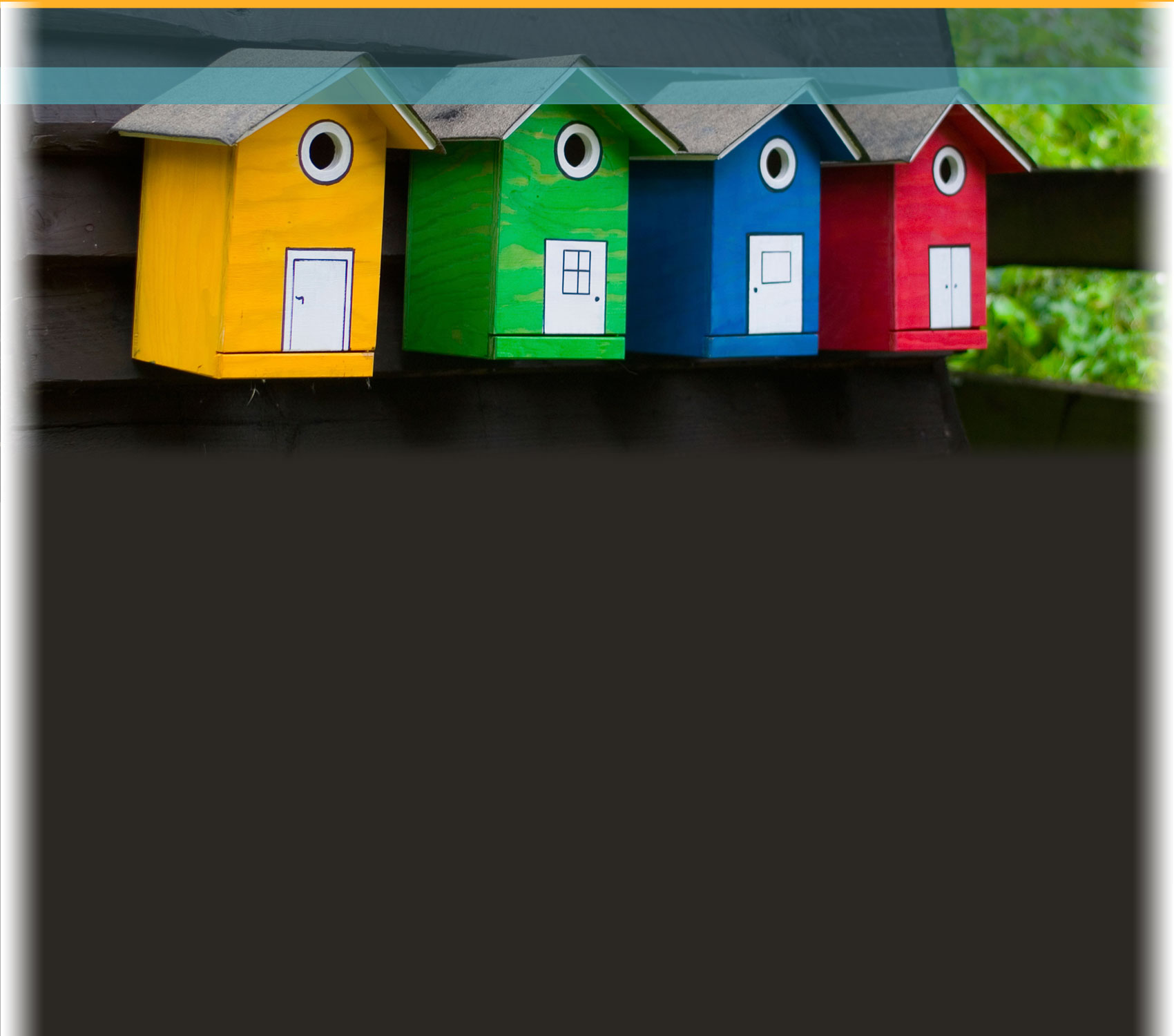Building a Nest Box
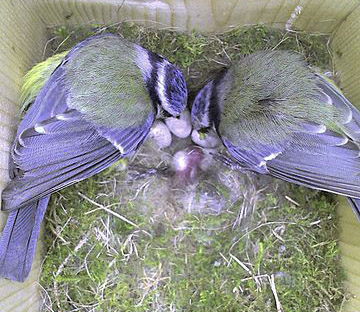
Two Blue Tit parents await their chick to hatch in a nest box.
Image courtesy of Snowmanradio, [CC-BY-SA 2.0], via Wikimedia Commons
Birds can be picky about the places they choose to build their nests. Read the following information to learn more about creating a nest box that is suitable for your bird.
Setting up a nest box is a great way to help cavitycavity-nesting birds. It provides a safe place to build a nest when they might otherwise have trouble finding suitable spots in their habitats.
There are two important considerations to think about when setting up a nest box. The first is the design of your nest box—how big it is, what shape it is, and the materials that make it. The second is the placement of your nest box—where you are going to put it, how high up to mount it, and how to avoid predators.
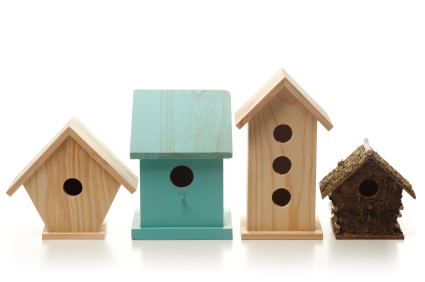
Nest boxes come in many different shapes, colors and sizes.
Let's start with the first consideration: nest box design. Biologists know that different birds are attracted to nest boxes of different sizes—and they have a better chance of raising their young to adulthood if they have the right size nest box.
Bewick’s Wrens
For Bewick's wrens, that means a nest box that is at least 4 inches wide, 4 inches deep, and 6 to 10 inches in height. The nest box can be made of any untreated wood that is at least three-fourths an inch thick and is rough inside. And it can be one of several different shapes, as shown here.
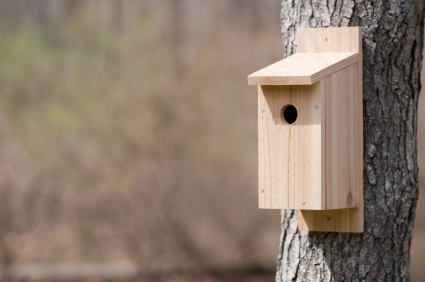
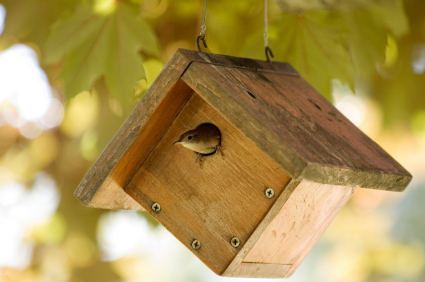
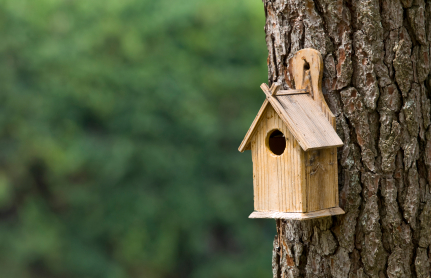
These are three different styles for a Bewick's wren nest box.
Whatever shape you choose, the nest box should have an entrance hole that is about 1 1/8 to 1 ¼ inches in diameter—any bigger, and larger birds may invade and take over, destroying any eggs or hatchlings they find inside.

This is a diagram of the parts of a nest box.
A nest box for your Bewick's wren should have a pitched roof with overhanging eaves eaves to allow rain to slide off. Drainage holes in the bottom, a recessed recessed floor, and ventilation holes near the top will ensure that your box is not too hot or damp. Glue will not be strong enough to hold your box together, but you can use screws or nails. Many people prefer screws since they allow you to unscrew one side and clean out the box after the birds have moved on. One thing your nest box should not have is a perch perch outside the entrance hole. The wrens do not need it, and predators could use it to reach inside and grab baby birds. Some people install a predator guard on the mounting pole to deter climbing predators.
